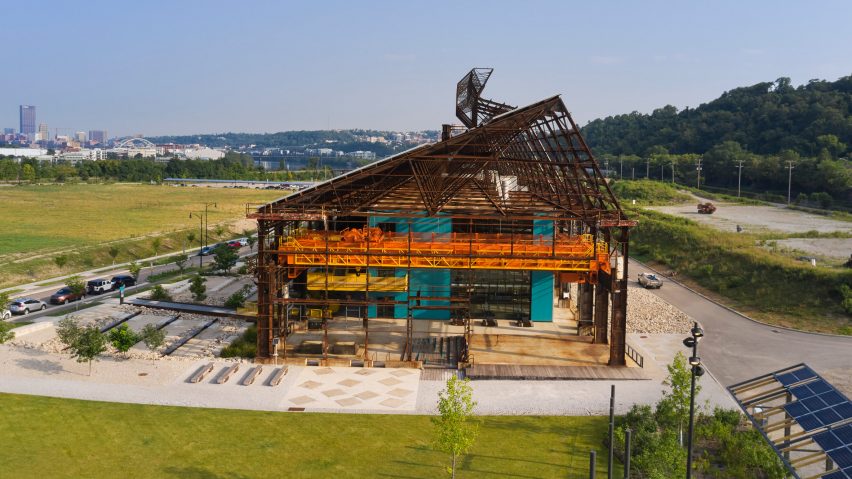
MSR Design places colourful buildings and walkways in skeleton of Pittsburgh steel mill
Minneapolis-based architecture studio MSR Design has installed a tech campus within the shell of a 70-year-old abandoned steel mill in Pennsylvania, adding three colourful buildings and a massive solar array to the rooftop.
The adaptive reuse project is located on a former brownfield site just a few miles from downtown Pittsburgh, in the city's Hazelwood neighbourhood. It overlooks the Monongahela River.
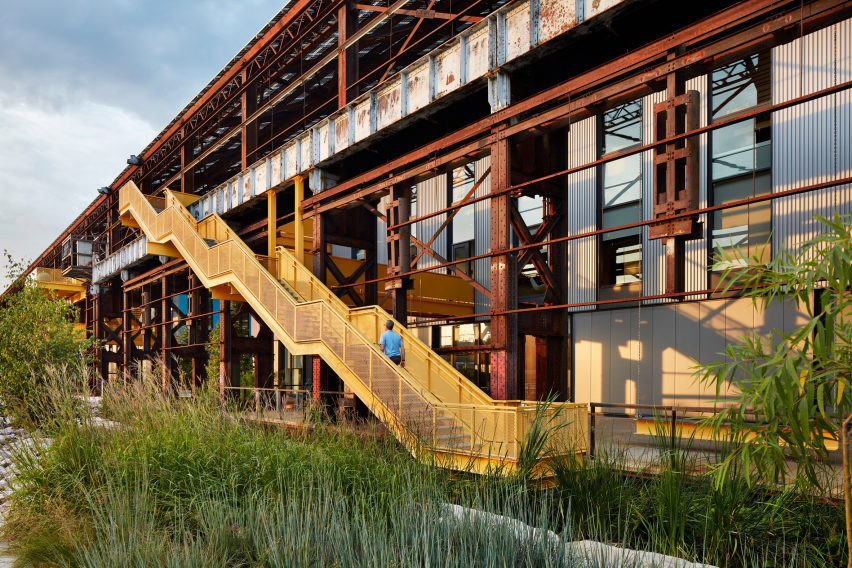
MSR Design nested three buildings within the massive shell of the historic mill, bringing the total floor space to 263,200 (24,452 square metres).
The campus was designed for tenants in the high-tech and manufacturing fields.
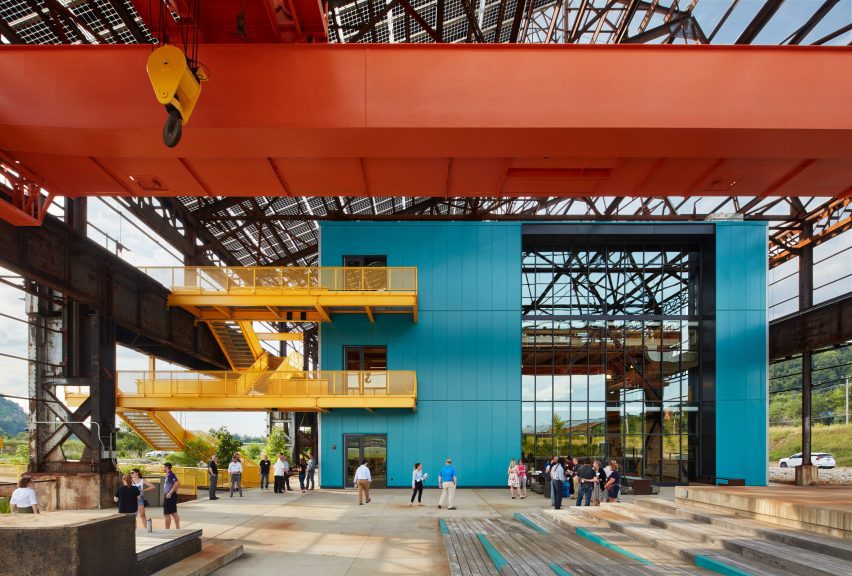
The steel rolling mill, known as Mill 19, was built in 1953. It remained in operation until 1997, making it the last steel mill to operate within Pittsburgh – a city that played a central role in America's now-withering steel industry.
"Mill 19 is a living emblem of Pittsburgh's transformation from its industrial steel-making past to a future of sustainable, advanced manufacturing," said Minneapolis-based architecture firm MSR Design.
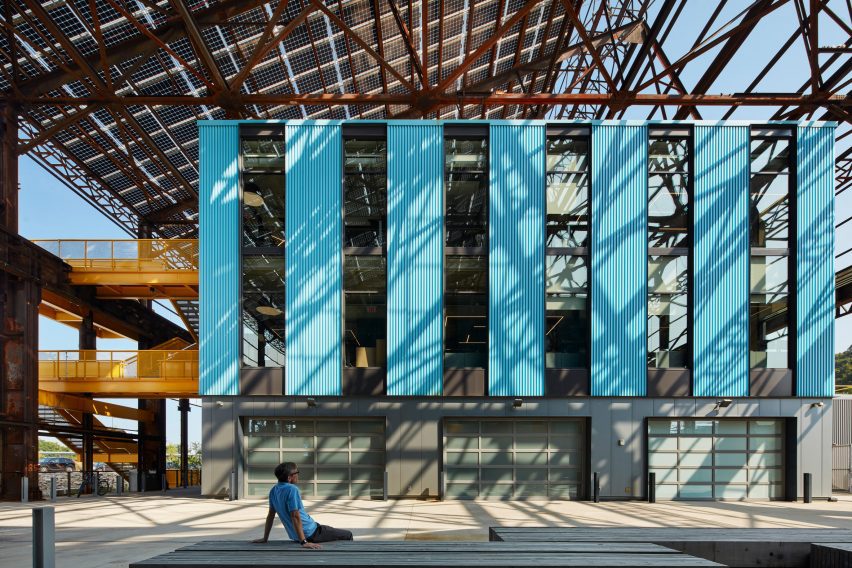
Preserving the site's history was a guiding concern for the architecture studio, leading it to retain the 1,360-foot-long (415 metres) and 100-foot-high (30 metres) skeleton of the old mill. The structure was power-washed and tested to ensure no contaminants remained.
"The design team took a unique approach to adaptive reuse by peeling away the existing mill's deteriorated sheet-metal skin, exposing its dramatic steel skeleton, and installing a sequence of speculative, high-tech office, lab, and manufacturing structures within the ruinous frames," the studio said.
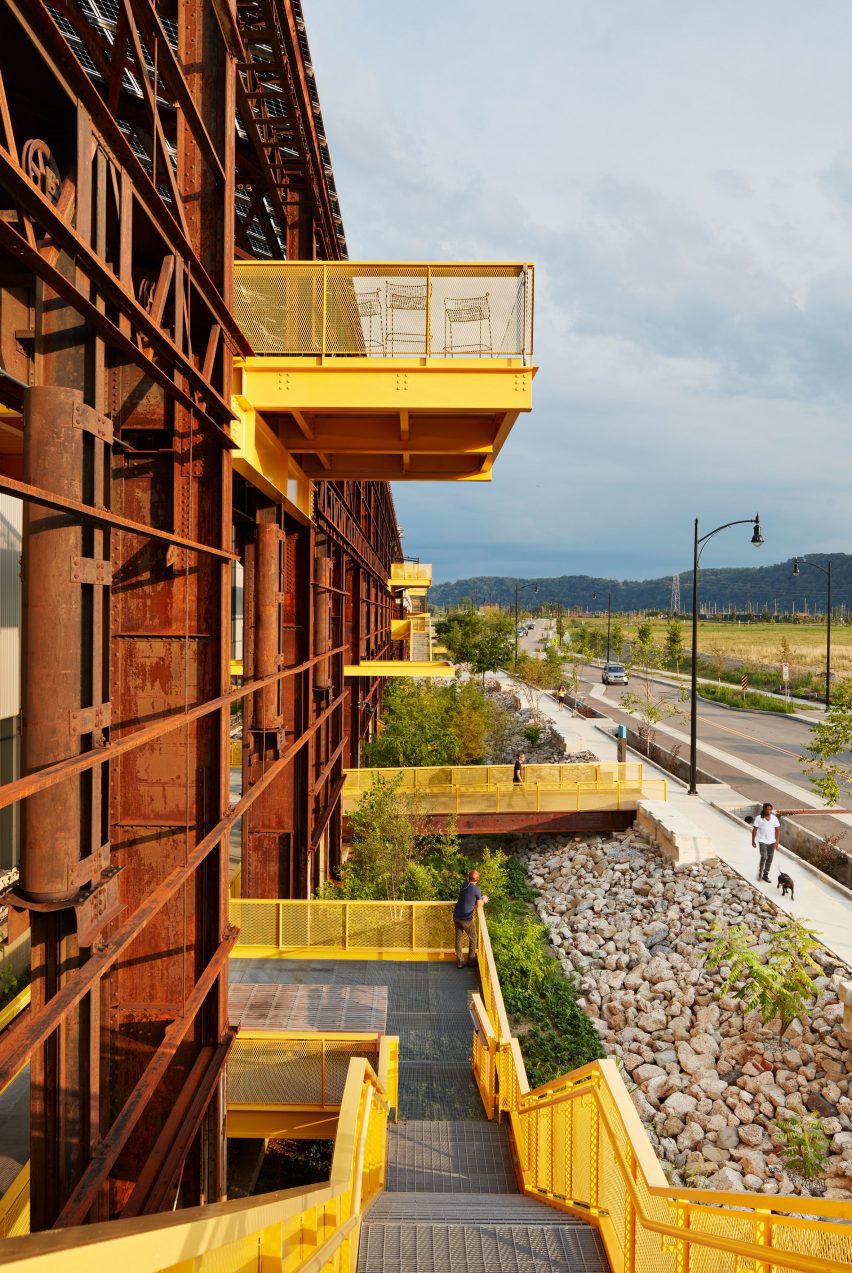
The trio of steel-framed buildings inserted within the mill's skeleton have different types of metal cladding.
An outdoor corridor runs along the southwestern elevation, between the new buildings and the old skeleton. Overhead, skybridges cross the interstitial space and connect to bright yellow staircases.
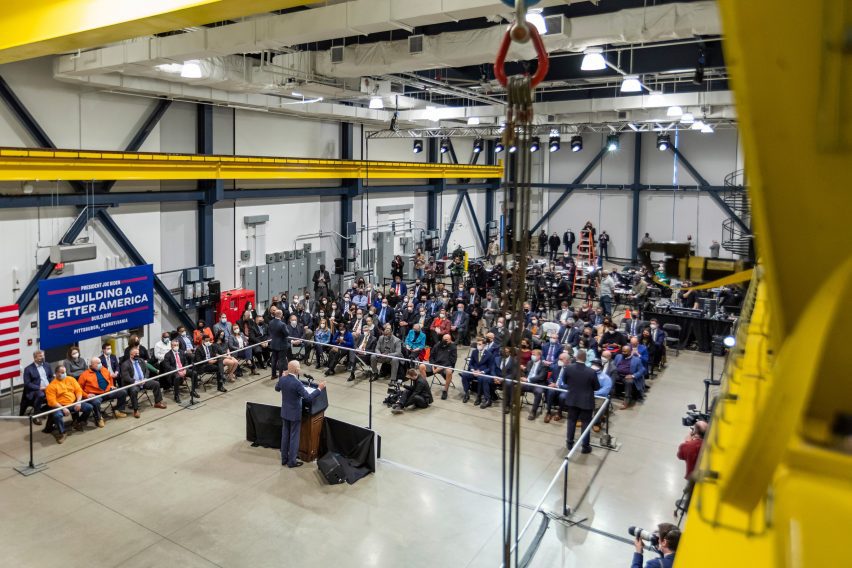
For the interiors, the team prioritised openness and adaptability. Large stretches of glass usher in natural light.
"The internal building layouts promote flexibility, clear space and daylighting to meet the needs of the high-tech tenants," the team said.
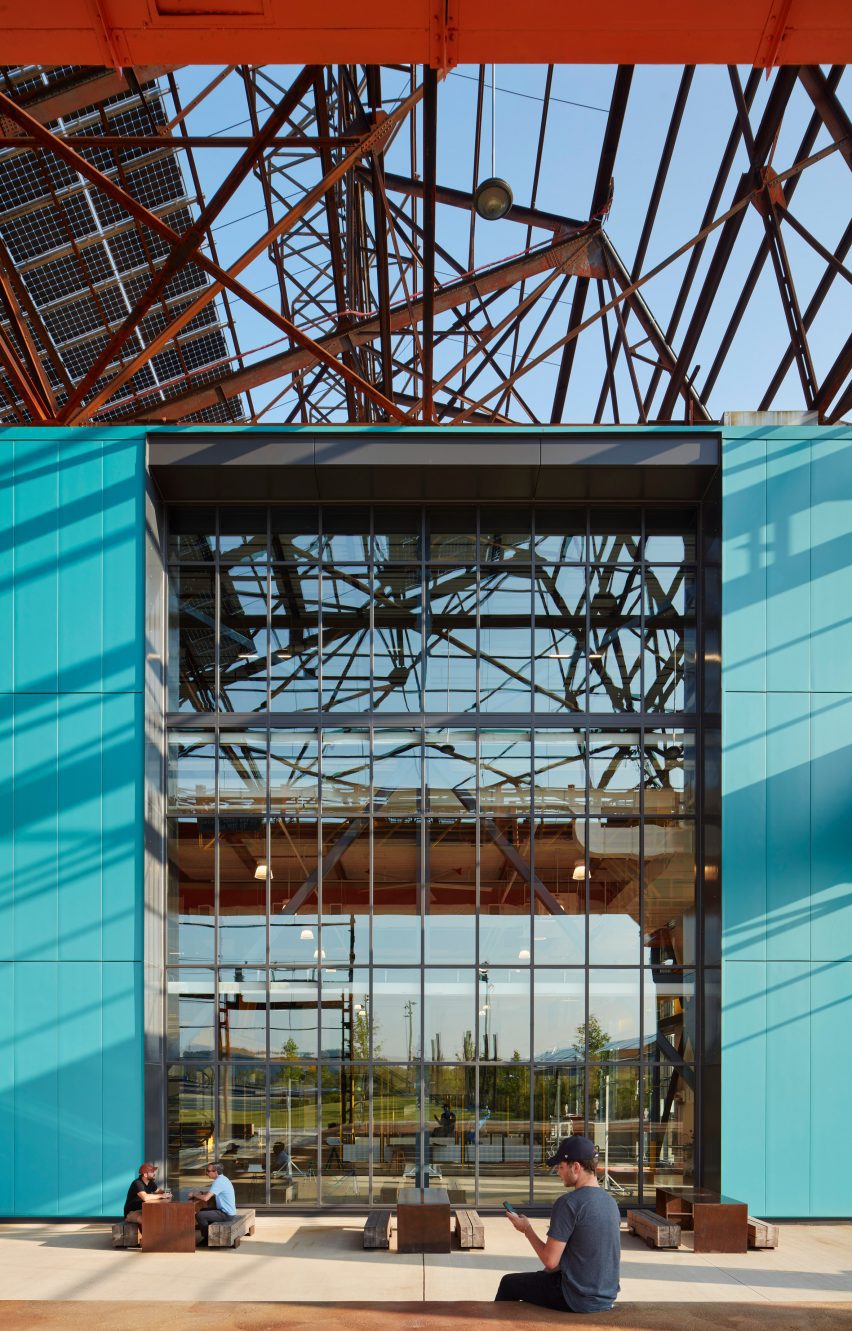
Throughout the campus, a series of gardens, terraces and plazas allow for "a range of experiences, from individual contemplation to large-scale community gatherings". Minneapolis-based TEN x TEN served as the project's landscape architect.
A number of sustainable elements were incorporated into the campus, enabling the project to win a 2023 AIA Committee on the Environment (COTE) Award.
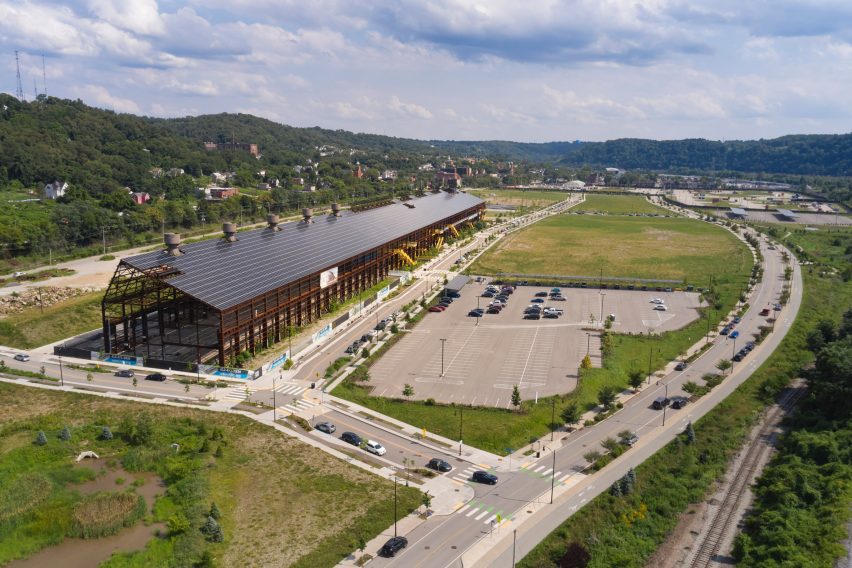
Of particular note is the two-megawatt, rooftop solar array, which is among the largest, single-slope arrays in America. It generates enough power to meet much of the site's energy needs.
Other sustainable features include an extensive system of rain gardens, channels and cisterns for managing and reusing stormwater.
Moreover, the site features salvaged material from the steel mill. For instance, the site's original concrete slab was broken up into pieces and incorporated into the landscape.
Mill 19 is the first portion of a 170-acre (69-hectare) redevelopment project called Hazelwood Green, which is rising on the riverfront site that once belonged to the Jones & Laughlin Steel Corporation.
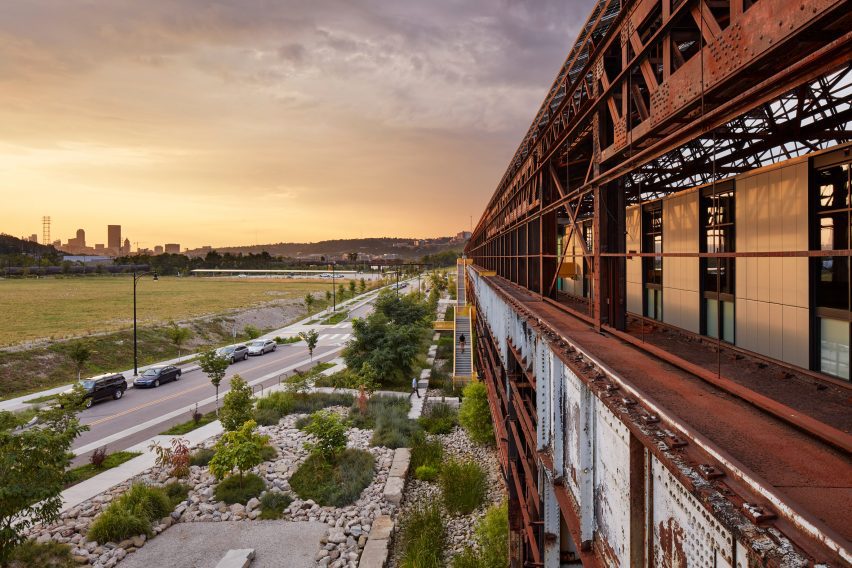
"Mill 19 serves as a catalyst and sets the tone for redeveloping all 170 acres into a sustainable, mixed-use, high-tech innovation district that reconnects the surrounding neighborhoods to the river's edge," the team said.
Current occupants include Motional, an autonomous vehicle company, and Carnegie Mellon University's Manufacturing Futures Institute, along with a public-private consortium called the Advanced Robotics for Manufacturing Institute.
The site has attracted both local and national attention. In 2022, US President Joe Biden toured Mill 19 and delivered a speech there about American manufacturing and innovation.
Other adaptive reuse projects in Pittsburgh include a children's museum housed in a historic library that had been damaged by a lightning strike and the transformation of a Ford Motor Company factory into a biomedical research laboratory.
The photography is by Gaffer Photography except where noted.
Project credits:
Lead architect and interior designer: MSR Design
Associate architect for phases A and B: R3A
Landscape architect: TEN x TEN
General Contractor: Turner Construction Co.
Client: Regional Industrial Development Corp.